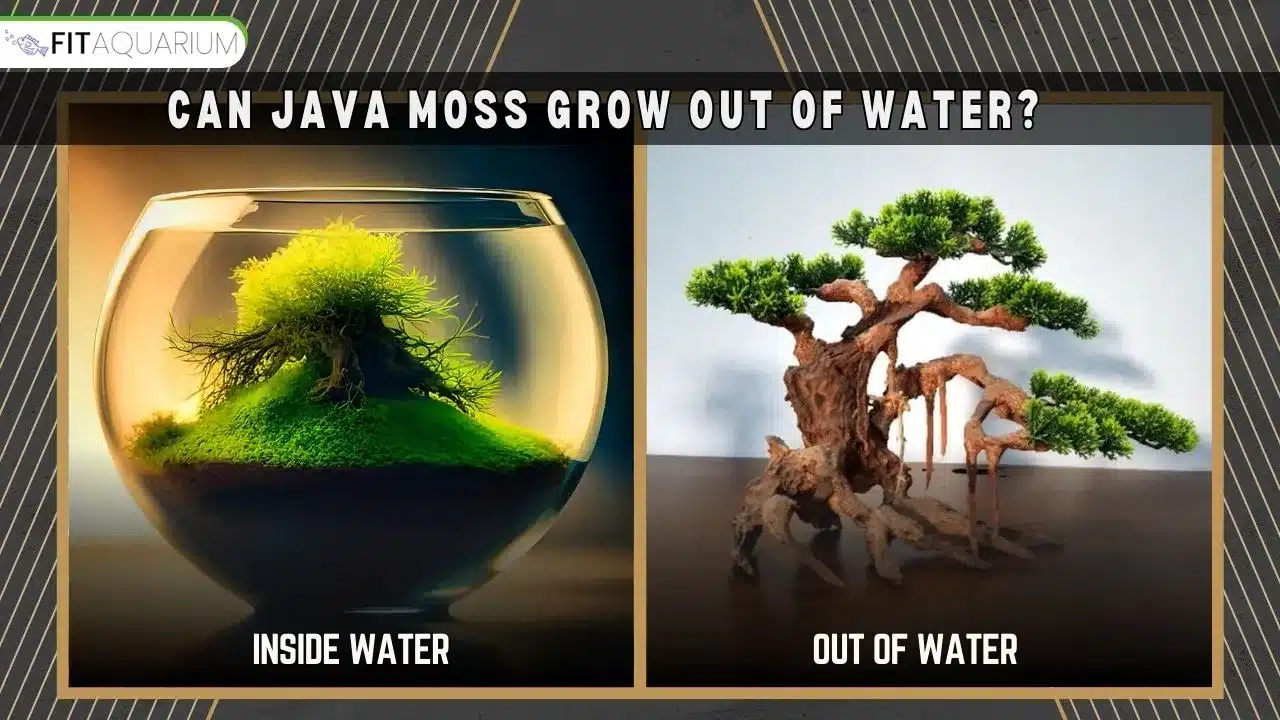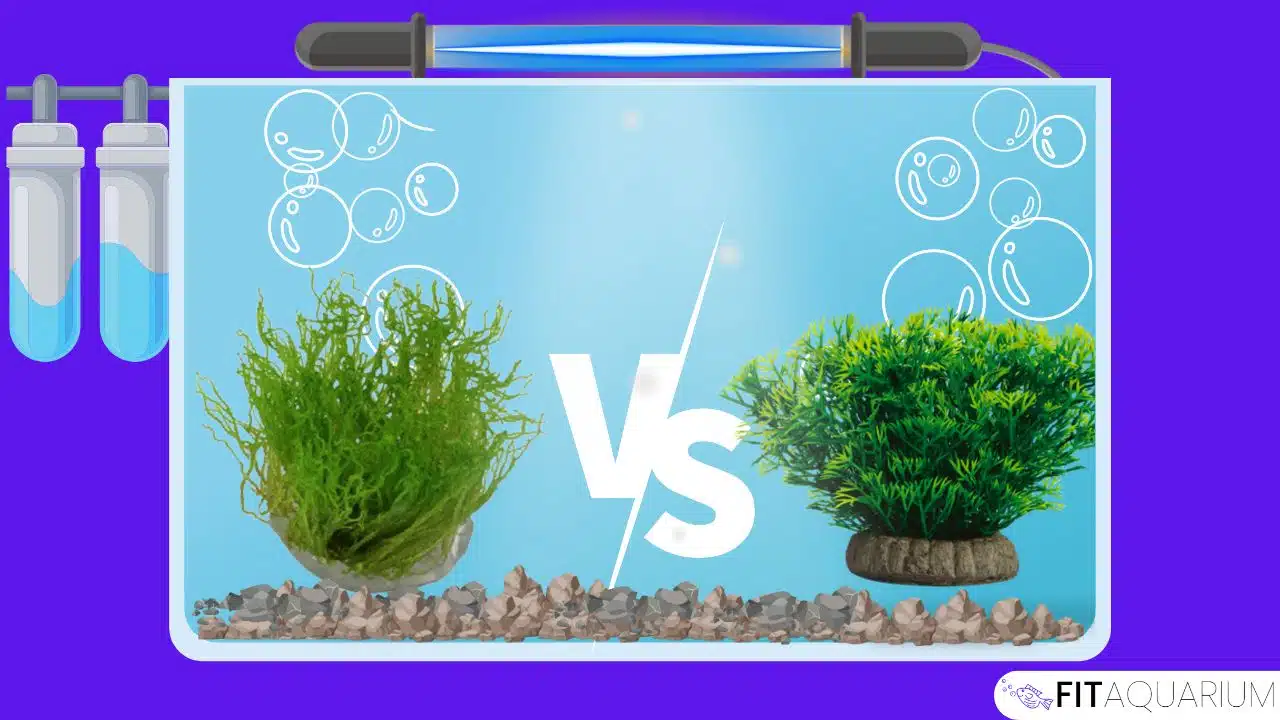If you want to make your aquarium appear nice then Java moss is the best option to grow. It is a simple non-vascular plant. Can you grow Java moss out of water? In this article, we will tell you everything you need to know about it. Let’s go exploring the world of Java moss together!
Table of Contents
Can Java Moss Grow Out of Water?
The most important question is can java moss survive out of water? The answer is Yes, Java moss plants grow and can survive out of water. Java moss is the most popular aquatic moss. It can grow above and below water. However, depending on the environment in which it is placed, it grows differently.
Java moss plant needs a lot of moisture to thrive. Without adequate water, the moss plant will dry out and die. If the moss is grown out of the water, it must be kept continually wet.
Effects on the Appearance of Java Moss
Java moss grows more compactly in water. It has a more complicated and bush-like look. On the contrary, when planted out of the water, Java moss grows less thickly. It has a more stringy look.
How to Grow Java Moss out of Water?
Here are simple steps to grow your moss out of water.
- Select Right Substrate
To make moss grow out of the water, it is essential to select the proper substrate. They can be sand or dirt. It is important to select a moist substrate, that is high in nutrients.
- Provide Moisture
To survive, and live outside of the water, Java moss requires enough water and a lot of moisture. Without sufficient moisture, the plant will dry out and die.
Note: It is critical to keep your Java moss wet at all times. One method is to spray water on the plant on a regular basis. One option is to place it in a container with a tiny amount of water.
- Keep Proper Light Exposure
Java moss needs reasonable light and humidity levels for its full growth rate. To keep java moss alive out of the water, it ensures proper light and places it in a spot with bright, indirect light.
- Provide Proper Fertilizer
To Java moss grow faster a nutrient source is required. Adding liquid fertilizer to the water or substrate can cause Java moss to grow faster.
- Maintain Java Moss
It is necessary to properly manage your Java Moss once it has been planted. Keep the plant moist and continuously hydrated, offer enough lighting, and fertilize it on a regular basis. Remove dead plant parts. It encourages healthy development.
- Attaching Surface
Attaching Java moss to a surface is an important part of growing it out of water. Java moss plants grow on a variety of surfaces. They can be rocks, soil, sand, land, driftwood, or mesh.
How many days java moss can survive out of water
Java moss is an aquatic plant. The actual amount of time that the Java moss plants and other plants can live out of water depends on a variety of factors. These are temperature, humidity, light exposure, and other objects to the moss plant’s health.
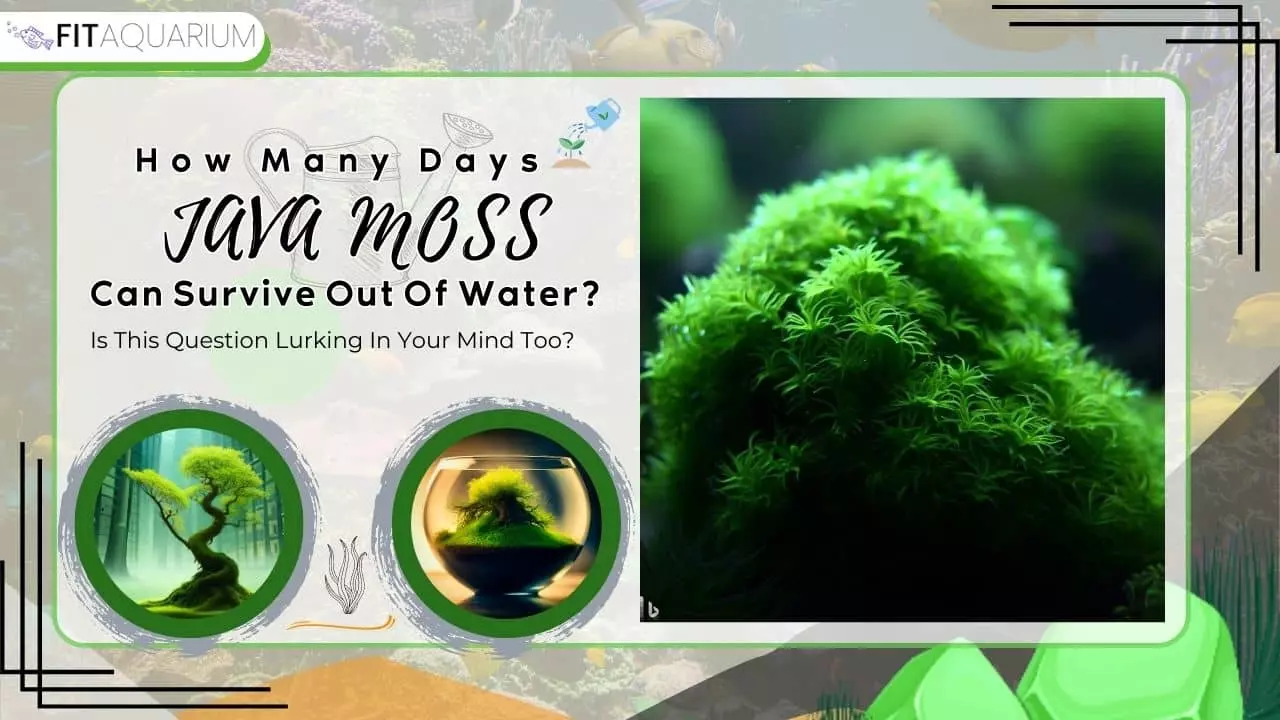
To maximize the possibilities of Java moss surviving without water
- Keep it wet by misting it on a regular basis
- Keep it in a damp location.
- Cover the plant with a plastic bag or other moisture-retaining material. It assists in creating a moist and humid environment around java moss.
When exposed to high humidity, direct sunlight, or high temperatures, the plant may dry up and die more quickly.
What are the Benefits of Growing Java Moss Out of Water
One of the most significant advantages of planting Java moss out of water is that you have more design alternatives. When cultivated in water, Java moss plants grow faster and form a thick, bushy cluster. it does restrict your possibilities for arranging the plant. When grown out of the water, Java moss spread more. It shows a stringy look. This allows you to arrange the moss plant in many ways.
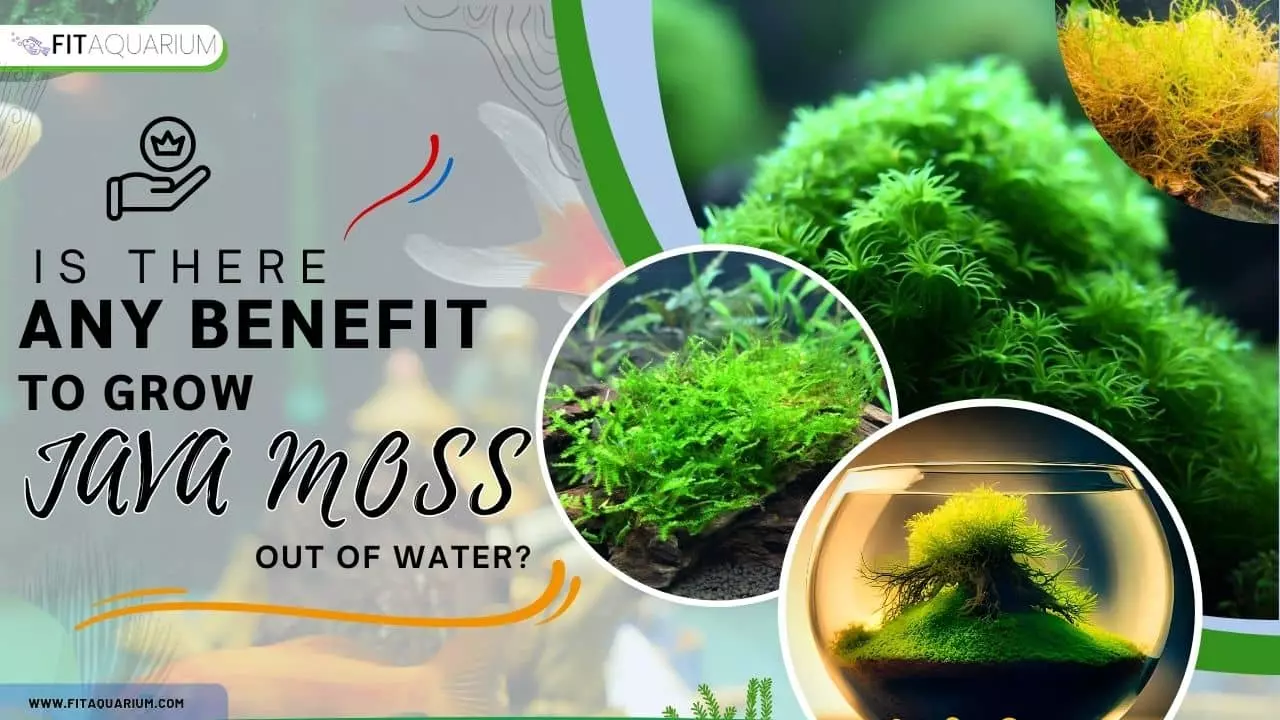
- Unique and Beautiful Appearance
Planting Java moss out of water may offer your fish tank a distinctive beautiful look. It provides you with more design possibilities even in a bigger tank.
When grown out of the water, Java moss takes on a more natural, organic appearance. Because of its stringy, expansive shape, it may appear more like nature appealing.
- Clean and Healthy
Another advantage of growing Java moss outside of the water is that it may be easier to manage than growing it in water. When cultivated in water, java moss can grow and collect contaminants. This might make cleaning difficult.
When cultivated out of the water, moss is less likely to collect pollutants. It makes it clean and healthy.
- Various options to hold
Planting out of water gives you greater flexibility in terms of where you may position the plant.
To survive, moss must be immersed when cultivated in water. Java moss is attached to rocks, soil, wood, or other surfaces out of water. This means you can create unique ideas of floating plant java moss, to place in your freshwater aquariums.
What are adaptations to survive java moss out of the water
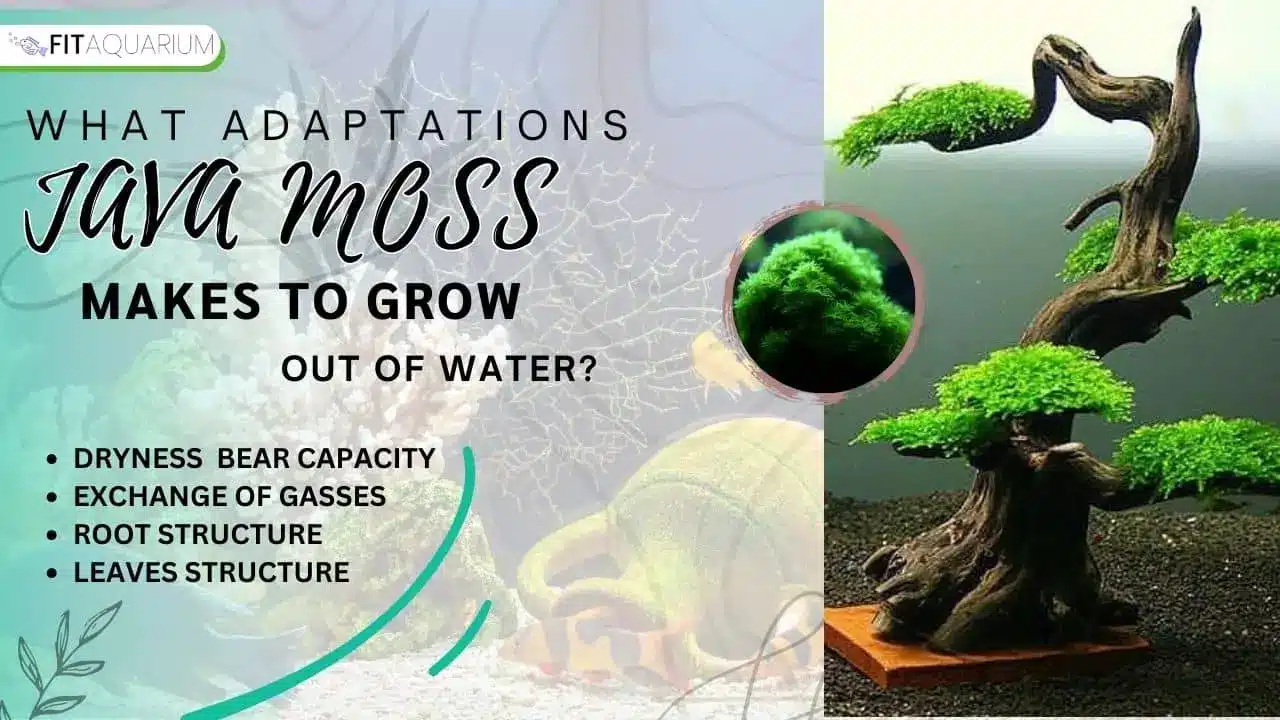
- Dryness bear capacity
The capacity of moss plants to bear dryness is one of their most essential adaptations. Java moss has evolved many systems to assist it in growing in dry environments. Moss grows faster in moist conditions.
For example
- The plant can become dormant
- Conserving energy by shutting down its metabolic functions.
- It may also lower its surface area by folding up its leaves, which helps to limit water loss.
- Exchange of Gases
When cultivated in the absence of water, moss must rely on air oxygen. Java moss can evolve specialized structures known as pseudopodia. They allow it to collect oxygen from the air. These structures also aid in the removal of excess carbon dioxide from the plant.
- Root structure
Java moss receives food through its leaves and stems when cultivated in water. When cultivated in the absence of water, however, it must rely on nutrient sources through its roots. Java moss uses its roots to acquire nutrients from the soil and surrounding environment.
Java moss develops specialized root structures known as rhizoids. These structures are thin, and hair-like. They help Java moss in absorbing nutrients from the surrounding soil.
- Leave structure
Java moss is frequently exposed to direct light. It can harm the sensitive tissues of Java moss.
The plant may change the angle and orientation of its leaves to maximize indirect light.
What things should consider while growing java moss out of water
Here are some strategies for managing threads while growing Java moss in water:

- Quality of water
Check the quality of the water you are using to moisten or soak the plant on a regular basis.
Avoid using hard water or water with a high concentration of dissolved minerals. this might cause thread algae to grow on the plant.
- Nutrients
To flourish, Java moss requires nutrients such as nitrogen and phosphorus. You may supply these nutrients by using a high-quality liquid or fertilizer designed exclusively for aquatic plants.
- Light
Java moss loves moderate to low light, so make sure it gets plenty of it. Avoid exposing it to direct sunlight. It can harm the plant and encourage the formation of thread algae.
- Trimming
Trimming on a regular basis promotes healthy growth. Remove any dead or damaged leaves using a sharp pair of scissors.
- Pests infection
Pests such as snails and algae-eating fish can help to keep thread algae under check. They can also harm Java moss.
Regularly inspecting the plant for symptoms of pest infestation is necessary.
What is the right supplement to grow java moss out of water
A liquid carbon dioxide supplement can be used as an added benefit for cultivating Java moss to grow well out of water.
This supplement contains carbon dioxide, which is required for the growth of other aquatic plants, such as Java mosses.
While Java moss can live in low-light environments, it still needs enough carbon dioxide to grow and thrive. Adding a liquid carbon dioxide supplement can help the plant develop and get enough nutrients to stay healthy.
Precaution: It is critical to use the carbon dioxide supplement in a low amount. High amounts kill the java moss and other most common aquatic plants and organisms in the same fish tank below. To establish the proper dosage, carefully follow the manufacturer's instructions.
Conclusion
Finally, Java moss growing out of water may be a unique aquarium experience. With its numerous advantages, this beautiful plant really is an excellent addition to any dish tank. You may grow a Java moss plant out of the water and enjoy its beautiful appearance by spraying water and following the proper maintenance requirements for the perfect plant.
Keep in mind that cultivating Java moss out of water needs some effort, attention and patience. You must inspect the plants on a regular basis, and provide them with the necessary moisture and light. Avoid common mistakes such as overwatering and not trimming java moss.
Frequently Asked Questions
Here are some frequently asked questions about Java Moss growing out of water.
-
Can Java Moss Grow on Land
Java moss could possibly grow on land, but it requires a damp, humid climate in order to do so. If the plant doesn’t get enough moisture, it will dry out and die. Java moss, on the other hand, is predominantly an aquatic plant that flourishes in water and can endure a variety of water conditions. Java moss may thus be grown on land, however, this is not the optimal atmosphere for the plant to flourish.
-
Will java moss attach to glass?
For sure Java moss can stick to surfaces made of glass. In fact, attaching Java moss to the aquarium’s glass walls using aquarium-safe glue is a common practice. The plant is going to eventually anchor itself to the glass and start to grow. Java moss can stick to a variety of surfaces, including rocks, driftwood, and even plastic ornaments. This makes it a useful and well-liked plant pick for aquarists.
Note: Always use Aquarium Safe Glue for adhering purposes. -
Can Java Moss grow floating?
Yes, Java moss can grow floating. In fact, floating java moss islands are one of the most popular aquascaping decorations. Because Java moss is a water column feeder, it may absorb nutrients straight from the water via its stems, leaves, and branches. As a result, it does not have to anchor its rhizoids to the substrate in order to grow.

